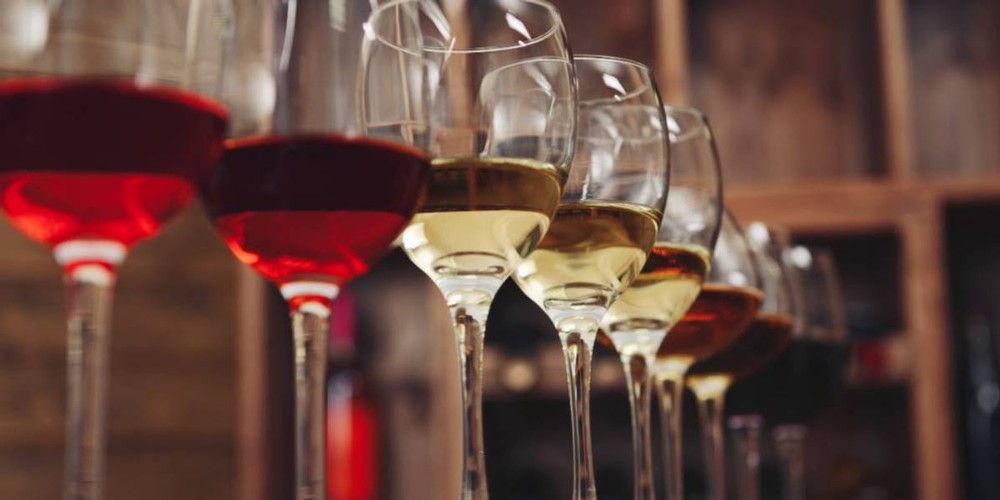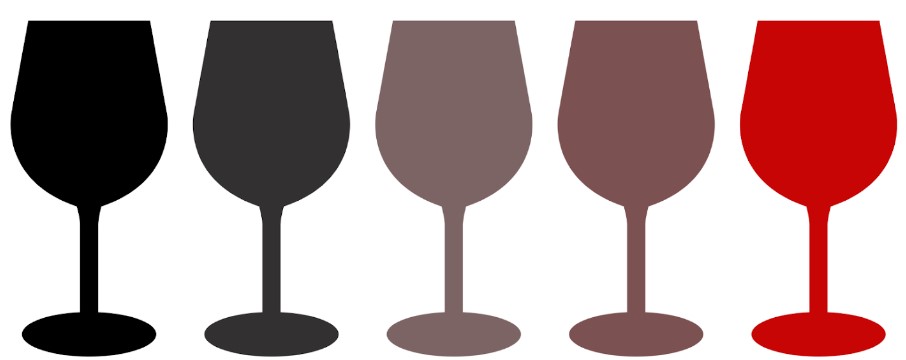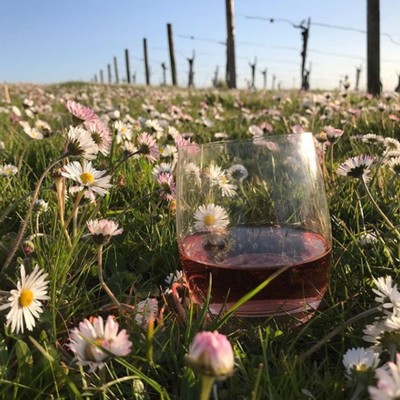Your Essential White Wine Sweetness Chart
Welcome, wine enthusiasts and aficionados, to your go-to guide on understanding the nuances of white wine sweetness. In this comprehensive post, we'll delve into the intricacies of sweetness levels in white wines, demystifying terms like "dry" and "sweet" while providing a handy white wine sweetness chart. Whether you're a seasoned connoisseur or just beginning your journey into the world of wine, Pacific Rim & Co. is here to elevate your knowledge and appreciation of this beloved beverage.

What Does Dry Wine Mean?
Before we dive into the sweetness chart, let's clarify the answer to the question; what does dry wine mean? Dry wine refers to a wine that contains minimal residual sugar, resulting in a crisp, refreshing taste. When you sip a dry white wine, such as a Sauvignon Blanc or Chardonnay, you'll notice a lack of sweetness on your palate. Instead, these wines often boast vibrant acidity and complex flavor profiles, making them versatile companions to a wide array of dishes.
Dry wines are prized for their versatility and ability to pair seamlessly with various cuisines. The absence of residual sugar allows the natural flavors of the grapes and terroir to shine through, creating a sensory experience that is both refreshing and nuanced. Additionally, the acidity present in dry white wines provides structure and balance, making them ideal for cutting through rich or fatty foods. According to a study published in the Journal of Food Science, dry wines have been associated with health benefits such as improved heart health and reduced risk of diabetes when consumed in moderation. Whether you're enjoying a crisp Chablis with fresh oysters or a zesty Sauvignon Blanc with a tangy goat cheese salad, dry white wines are sure to enhance your dining experience.
Furthermore, the term "dry" can vary depending on personal taste preferences and cultural context. While some wine drinkers may prefer bone-dry wines with no perceptible sweetness, others may enjoy wines with a touch of residual sugar, known as off-dry or semi-dry. Understanding the spectrum of dryness in white wines allows you to make informed choices when selecting bottles for different occasions or pairings. With Pacific Rim & Co.'s commitment to sustainability and quality, you can trust that each bottle of dry white wine reflects our dedication to craftsmanship and excellence.

Decoding the Sweetness Levels: A White Wine Sweetness Chart
Understanding the sweetness levels of white wine is essential for selecting the perfect bottle to suit your taste preferences. To assist you in this endeavor, we've created a white wine sweetness chart that categorizes wines based on their sugar content, ranging from bone-dry to lusciously sweet. Let's explore each category:
Bone-Dry:
- Wines in this category have minimal residual sugar, offering a crisp and refreshing taste. They typically have less than 1 gram of residual sugar per liter.
- Examples include Pinot Grigio, Albariño, and some styles of Chablis.
Dry:
- Dry white wines have a subtle hint of sweetness balanced by acidity, providing a clean and balanced flavor profile. They typically have 1-10 grams of residual sugar per liter.
- Examples include Sauvignon Blanc, unoaked Chardonnay, and Grüner Veltliner.
Off-Dry:
- Off-dry white wines possess a touch of sweetness, making them approachable and versatile. They typically have 10-35 grams of residual sugar per liter.
- Examples include Riesling Kabinett, Chenin Blanc, and Moscato d'Asti.
Medium-Sweet:
- Medium-sweet white wines offer a noticeable sweetness on the palate, balanced by acidity for a harmonious taste. They typically have 35-75 grams of residual sugar per liter.
- Examples include Gewürztraminer, late-harvest Riesling, and some styles of Viognier.
Sweet:
- Sweet white wines are lusciously sweet, with pronounced residual sugar and rich, decadent flavors. They typically have over 75 grams of residual sugar per liter.
- Examples include Sauternes, Ice Wine, and Tokaji.
Navigating the White Wine Sweetness Chart
Now that you're acquainted with the various sweetness levels, you can confidently navigate the aisles of your local wine shop or peruse our selection of Pacific Rim & Co. wines online. Our commitment to sustainability and quality shines through in each bottle, showcasing the unique essence of the Pacific Northwest region.
When exploring the white wine sweetness chart, it's essential to consider personal taste preferences and food pairings. For those who enjoy crisp, bone-dry wines, options like Pinot Grigio or Albariño are excellent choices for refreshing summer sipping or pairing with light seafood dishes. On the other hand, if you prefer a hint of sweetness in your wine, off-dry or medium-sweet varietals like Riesling or Gewürztraminer offer a delightful balance of fruitiness and acidity. These wines pair beautifully with spicy Asian cuisine or creamy cheeses, enhancing the overall dining experience.
Understanding what makes wine sweet involves various factors, including grape ripeness, winemaking techniques, and residual sugar content. During the winemaking process, grapes undergo fermentation, where yeast converts grape sugars into alcohol. The level of sweetness in the final wine depends on how much sugar remains unfermented. Factors such as grape variety, climate, and harvest timing play crucial roles in determining sugar levels in the grapes. For instance, grapes harvested later in the season tend to have higher sugar levels, resulting in sweeter wines. Additionally, winemaking techniques such as late harvesting, sun-drying, or fortification can also influence wine sweetness. At Pacific Rim & Co., our winemakers meticulously monitor these factors to craft wines that strike the perfect balance between sweetness and acidity, ensuring a delightful sensory experience with every sip.

Exploring the Science Behind Wine Sweetness
Have you ever wondered what factors contribute to the varying levels of sweetness in white wines? It's a complex interplay of several scientific processes that occur during grape growth and winemaking.
1. Grape Ripeness
One of the primary determinants of wine sweetness is the ripeness of the grapes at harvest. As grapes ripen on the vine, their sugar levels increase. This is because sunlight triggers photosynthesis in the grapevine, converting sugars stored in the leaves into glucose and fructose in the grapes. Winemakers carefully monitor the ripeness of the grapes, known as "brix," to determine the optimal time for harvest. Grapes harvested earlier in the season tend to have lower sugar levels and produce drier wines, while grapes left to fully ripen on the vine result in sweeter wines.
2. Residual Sugar Content
During the winemaking process, grapes are crushed, and the juice is extracted for fermentation. Fermentation is the conversion of sugar into alcohol and carbon dioxide by yeast. However, not all sugars are completely fermented. Some remain unfermented, contributing to the residual sugar content of the wine. Winemakers can control the sweetness of the final wine by halting fermentation before all the sugar is converted into alcohol. This is often done by chilling the wine or adding sulfur dioxide to inhibit yeast activity. The amount of residual sugar left in the wine determines its sweetness level, ranging from bone-dry to lusciously sweet.
3. Winemaking Techniques
Winemakers have various techniques at their disposal to influence wine sweetness. Late-harvesting involves leaving grapes on the vine longer than usual to allow them to accumulate more sugar. This results in sweeter wines with higher residual sugar levels. Another technique is sun-drying, where grapes are laid out in the sun to partially dehydrate, concentrating their sugars. This process is commonly used in the production of sweet dessert wines like Vin Santo or Amarone. Additionally, some winemakers opt for fortification, where grape spirits such as brandy are added to the wine to stop fermentation and retain residual sugar, as seen in fortified wines like Port or Sherry.
Understanding these scientific processes sheds light on the complexity of wine sweetness and highlights the artistry and skill involved in winemaking. At Pacific Rim & Co., our winemakers harness these techniques to craft wines that embody the perfect balance of sweetness, acidity, and flavor, resulting in exceptional wines that delight the senses.
The Role of Terroir in Wine Sweetness
In addition to scientific factors, the concept of terroir also plays a significant role in wine sweetness. Terroir encompasses the environmental factors that influence grape growing, including soil composition, climate, topography, and vineyard management practices. These unique terroir characteristics impart distinct flavors and aromas to the grapes, which ultimately influence the sweetness of the wine.
1. Climate
Climate has a profound impact on grape ripening and sugar accumulation. In cooler climates, grapes may struggle to reach optimal ripeness, resulting in lower sugar levels and drier wines. Conversely, warmer climates promote sugar accumulation, yielding riper grapes and sweeter wines. For example, regions like California's Napa Valley or Australia's Barossa Valley are known for their sun-drenched vineyards, producing rich, ripe wines with pronounced sweetness.
2. Soil Composition
The composition of the soil in which grapevines are planted can also influence wine sweetness. Different soil types, such as limestone, granite, or volcanic ash, impart unique mineral flavors to the grapes, which can enhance or balance the sweetness of the wine. For instance, wines grown in limestone-rich soils may exhibit vibrant acidity, balancing out the sweetness of the fruit flavors.
3. Vineyard Management
Vineyard management practices, such as irrigation, canopy management, and vine spacing, can impact grape ripening and sugar accumulation. Sustainable vineyard practices, such as organic or biodynamic farming, aim to promote soil health and biodiversity, creating optimal conditions for grape growth and flavor development. By nurturing the vineyard ecosystem, winemakers can produce grapes with balanced sugar levels and expressive flavors, resulting in wines that reflect the unique terroir of the region.
By considering the scientific processes and terroir influences behind wine sweetness, wine enthusiasts can gain a deeper appreciation for the complexities of winemaking and the unique characteristics of each bottle. At Pacific Rim & Co., we celebrate the diversity of terroir in the Pacific Northwest, crafting wines that showcase the region's distinct flavors and reflect our commitment to sustainability and quality.
Embark on a Sweet Journey with Pacific Rim & Co.
As you embark on your journey through the world of white wine sweetness, let Pacific Rim & Co. be your trusted companion. With our dedication to sustainability, regionally-specific wines, and exceptional quality, we invite you to explore our selection of white wines and indulge in the rich flavors and aromas of the Pacific Northwest.
Ready to elevate your wine experience? Click here to browse our collection of white wines and embark on a sweet adventure like no other. Cheers to good wine and great company!
Contact us for more information or to join our wine club for exclusive offers and updates.